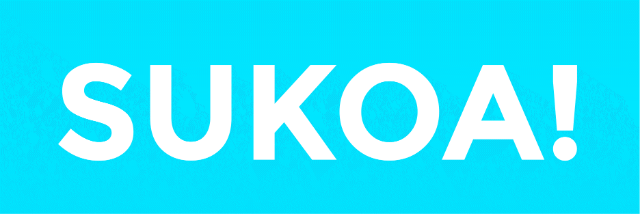Woche der Berufsbildung 2024
Ausgabe 2024
Die Woche der Berufsbildung ist die Weiterentwicklung des interkantonalen Tags der Berufsbildung, auch Radiotag genannt. Dieses Jahr beteiligen sich rund 30 Radiostationen und weitere Medien an der Woche der Berufsbildung und widmen sich über die Woche verteilt der Berufsbildung.
Woche der Berufsbildung 2024 ab sofort bis 17.5.

OnAir
Es können leichte Änderungen im Programm entstehen.
Montag
11:30 Grussbotschaft der Baselbieter Bildungsdirektorin: Monika Gschwind
16:30 Im Gespräch: Baselbieter Regierungspräsidentin Monica Gschwind im Interview
Dienstag
07:15 Mit Können zur Weltspitze: Edward Booth und die WorldSkills
09:15 Mit Können zur Weltspitze: Edward Booth und die WorldSkills
12:15 Mit Können zur Weltspitze: Edward Booth und die WorldSkills
17:15 Mit Können zur Weltspitze: Edward Booth und die WorldSkills
Mittwoch
07:15 Beruf im Fokus: Hotel-Kommunikationsfachmann/-frau
09:15 Beruf im Fokus: Hotel-Kommunikationsfachmann/-frau
12:15 Tag der Lernenden: Begegnungen und Kurzinterviews
16:00 Eltern als Wegweiser: Gesprächsrunde zur Berufswahl
17:15 Tag der Lernenden: Begegnungen und Kurzinterviews
Donnerstag
07:15 Berufswahl mit Weitblick: Nautische:r Fachmann/-Frau und Kapitän:in in der Region
09:15 Spitex unterwegs: Pflege vor Ort erleben
12:15 Berufswahl mit Weitblick: Nautische:r Fachmann/-Frau und Kapitän:in in der Region
17:15 Spitex unterwegs: Pflege vor Ort erleben
Freitag
07:15 Endress+Hauser: Innovation und Präzision – Ein Besuch beim Branchenführer
09:15 Start-up – Der Weg in die Selbstständigkeit
11:30 Neue Perspektiven: Das Laufbahnzentrum Pratteln im Fokus
12.15 Endress+Hauser: Innovation und Präzision – Ein Besuch beim Branchenführer
17:15 Start-ups – Der Weg in die Selbstständigkeit
Kontakt
redaktion@radiox.ch
061 500 24 00
Die Woche der Berufsbildung ist eine Initiative der Schweizerischen Berufsbildungsämter-Konferenz SBBK und wird vom Staatssekretariat für Bildung, Forschung und Innovation SBFI unterstützt.
In Zusammenarbeit mit den Kantonen BL und BS und mit der Unterstützung von Berufsbildungplus.ch.

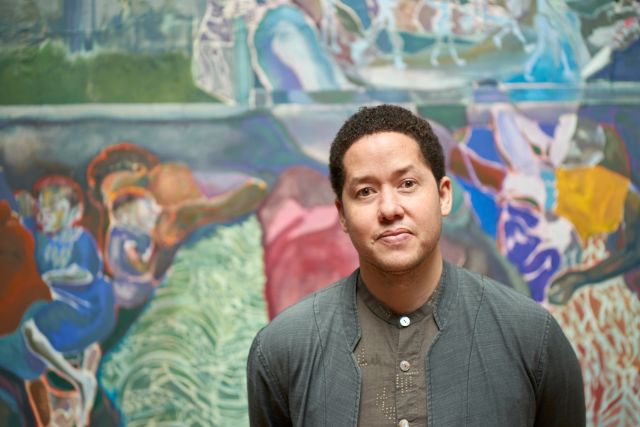
Im Dienste des Pinsels: Michael Armitage
Der englisch-kenyianische Maler Michael Armitage beschwört beindruckende Farbwelten, näht post-koloniale Narrative zusammen und sagt aber auch: Das höchste Gut sei unser Vorstellungsvermögen. 23 neue Werke sind in der Kunsthalle zu sehen. von Mirco Kaempf
22.05.29 Michael Armitage
In You, Who Are Still Alive zeigt der Maler Michael Armitage 23 neue Werke in der Kunsthhalle
Ob die Farben wirklich immer zusammenpassen würden, wisse selbst er nicht immer. Wenn uns das der aktuelle Shootingstar Michael Armitage so nebenbei offenbart, spricht das vor allem für seine Demut der Kunst gegenüber. Denn: Die Malereien, an welchen er in den letzten zweieinhalb Jahren gearbeitet hat und nun in der Kunsthalle zur Schau stellt, sind eine Offenbarung.
How often do you manage to surprise yourself when working in the studio?
One of the things with painting is that it's both difficult and giving is that you can try to do the same thing twice, but it never comes out that way, That's the challenge, the balance and the education of trying to make a painting. Everytime you sit down to make something there is an element of surprise and a lack of control and give and take between yourself and whatever it is that the painting requires.
Michael Armitage ist nicht einmal 40 Jahre alt und zeigt seine Malereien in London, New York, Sidney, Hong Kong oder Cape Town. Vertreten wird er dabei von der renommierten White Cube Gallery. Nächstes Jahr wird die Rückseite der neuen 1 Pfund Münze in Grossbritannien sein Design enthalten. Die aktuelle Ausstellung in der Kunsthalle zeigt neue Werke, unte dem Ausstellungstitel You, Who Are Still Alive.
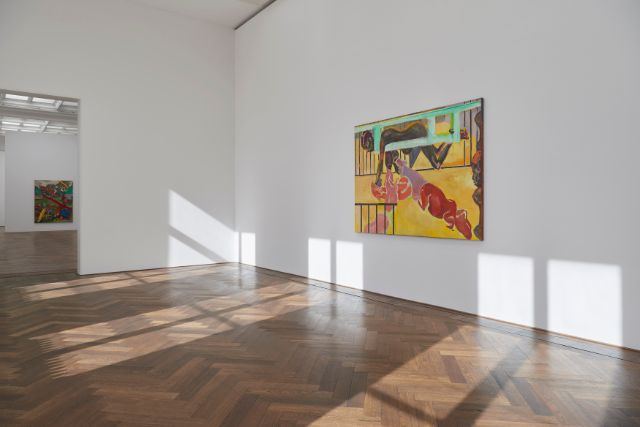
Entstanden sind die meisten Werke in Nairobi. Die Malereien vereinen Erdtöne, Landschaften aus der kenyanischen Umgebung, Portraits von Menschen und Kreaturen, immer wieder auch mit einem nahezu surrealen Aspekt. Wer näher rangeht, die Pflanzen und Gesichter genauer betrachtet, kann wohl nicht anders, als beeindruckt zu sein. Jeder Strich sitzt.
What part does intuition play? You seem to sketch your paintings out very carefully.
I wouldn't say I do any of it very carefully. But I would say I follow my intuition as much as I would trust it. (It's very difficult to follow it if you don't trust it as it's no longer intuition) but intutition is kind of... it's a very difficult idea when referring to painting. Because you can think of something as intuitive but it's also reactive. Because once something happens there's something that you work off. So it's not necessarily an intuition but an unfurling of a puzzle in a way. Every decision is a set of new problems. And I think that also leads back to your question about surprise. The problem is always new, it's always a new challenge. And like that I think the wort intuition can be helpful but also unhelpful.
Erdtöne werden immer wieder durchbrochen von violetten Neonfarben. Von giftgrünen Röhren, einem pinken Kleid oder knalligen orangen Farbflächen mitten im Bild. Dabei ist ein bemerkenswerter Aspekt in der Kunst von Michael Armitage nicht nur die Malerei selber, sondern auch das Medium worauf er malt. So nutzt er nicht etwa klassische Leinwände, sondern Lubugo-Rinde. Ein Tuch, welches von Natal-Feigenbäumen gewonnen wird. In Nairobi wird dieses Material vor allem für zeremonielle Zwecke verwendet. Wenn das Material aufgespannt wird, entstehen immer wieder Löcher (Als "Narben" oder "Portale" werden sie indes im Saaltext bezeichnet). Diese Lubugo Tücher werden zusammengenäht und auf Keilrahmen bespannt.
How does the brush feel when you paint on lubugo, rather than on a linen canvas?
It really depends on the consistency of paint that you use. If you use something that's thin and oily it's very smooth as the brush doesn't bite against the surface. But if you use something that's much more dry with much less oil, it has a lot of resistance. The other thing that has an effect is that the surface is very irregular. Sometimes there are holes, sometimes there are ridges. There's also the grain of the bark. And so all of those things affect the way that the brush sits on the surface. and subsequently the type of mark that you can get.
Die Tatsache, dass Michael Armitage auf Lubugo-Rinde und nicht auf klassischen Leinwände malt, ist zum Teil politisch. Es sei ihm wichtig gewesen, ein Material zu finden, welches nicht im klassischen Sinne des westlichen Kunstgeschicht-Kanons verortet werden kann. Wenn er in London oder Nairobi kenyanische Landschaften malt, pop-historische Mythologien aufnimmt und das alles miteinander verfliessen lässt, dann schwingt unweigerlich auch ein post-koloniales Bewusstsein mit - Auch wenn der Künstler selber hierzu nicht explizit darüber spricht.
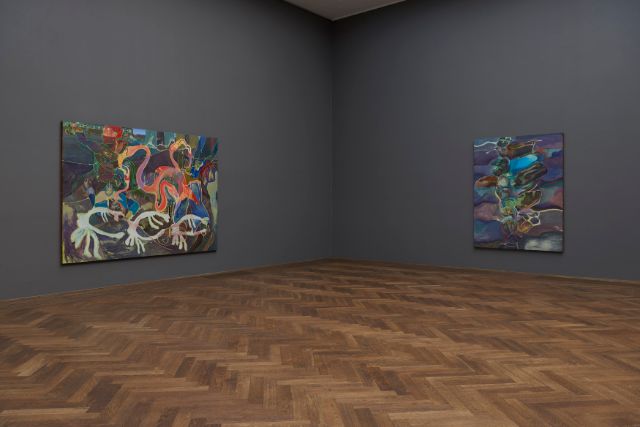
Does it not feel a little off and strange to have these paintings of a Nairobi landscape inside these very old, historic, air conditioned white walls?
It's always off and strange. For me the currency of all of this is the imagination. And like that you carry that into any space. It always fits and it never fits.
You are designing the flipside of the new 1 pound coin for the UK next year. Why would an artist want to imprint himself on the forces of capitalism?
[laughs] the interesting thing with currency (the object) is it has many different narratives. Whether it was for example in World War 2: bullet casings and coins were used by soldiers to hammer down and write notes to their loved ones on. Or whether it's a memento of a bygone time, that gives you some decipher as to what's happening in that time. Ultimately for me, the coin, the note itself, is a form of exchange. It's a way of recognising something or an agreement with somebody else. Yes there are many, many epic ideas and problems... that one may come across. But to me that's actually something that was both quite profound and very humble. It's about an exchange between two people.


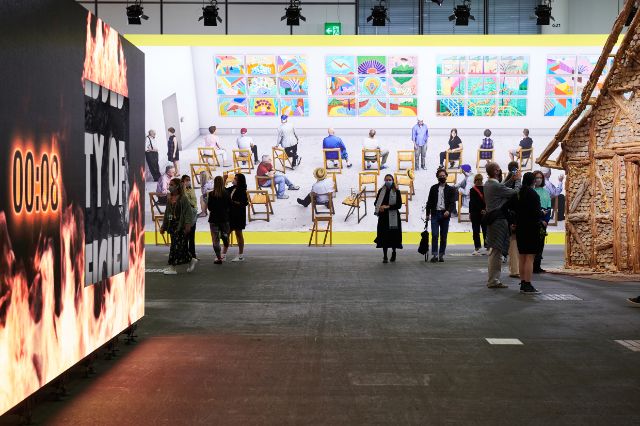
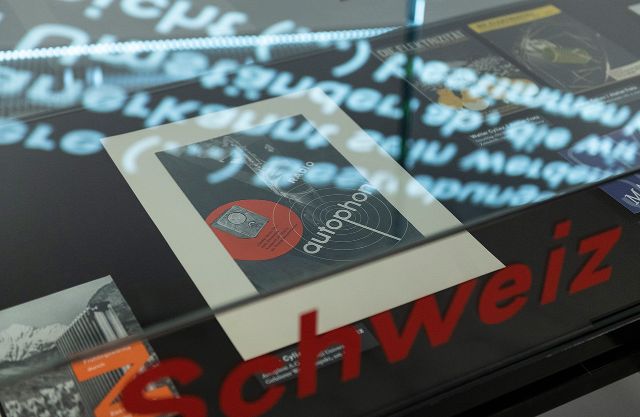
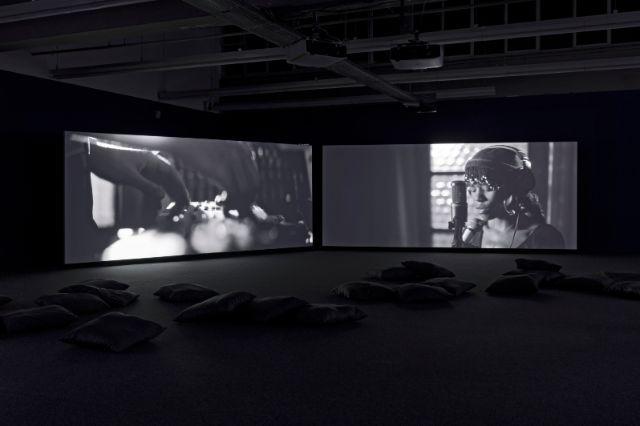
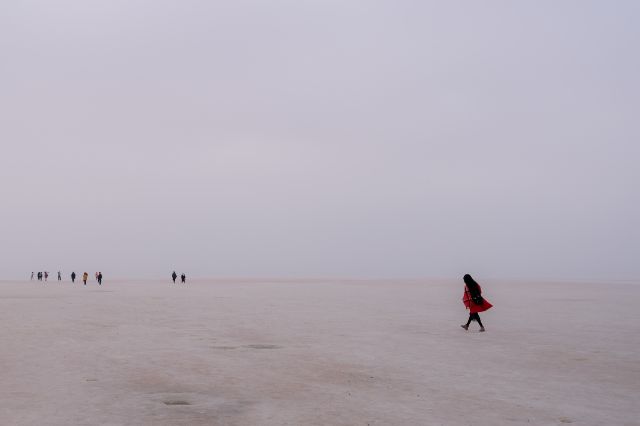
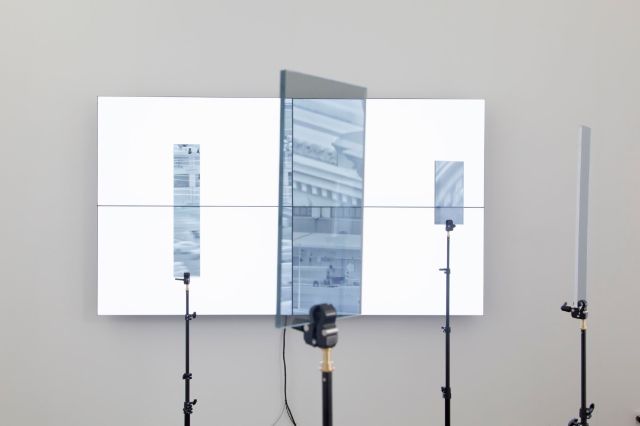
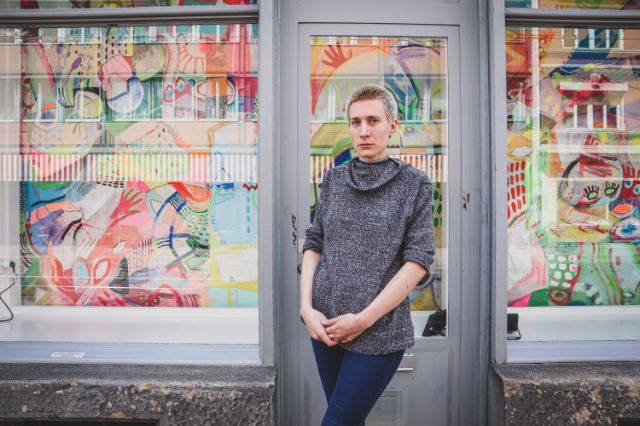
.png/jcr:content/magnolia-medium.png)
